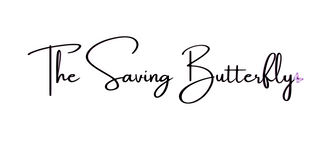Disclosure: Some of the links below are affiliate links. This means that, at zero cost to you, I will earn an affiliate commission if you click through the link and finalize a purchase.
If you are a part of the budgeting community, then you probably know what cash envelopes are. I have been using cash envelopes since October of 2021, and cannot see myself switching to another system. This system has provided me with discipline and the ability to reach my financial goals. I went from living paycheck to paycheck, to being one month ahead on bills.
I am so passionate about the cash envelope system, that I want to help you reach your savings goals using this system. Today, I am going to teach you how to use cash envelopes for everyday spending and savings goals.
What Is a Cash Envelope?
A cash envelope system is a budgeting method used to manage your saving and spending with the use of physical money. There are different reasons that cash envelopes are used, but the most common are for: weekly spending, sinking funds, savings challenges, and bills. When you use cash envelopes, the money is placed in an envelope for the budget category. When you are ready to use the money you pull the cash out of your envelope to pay for that category.
Some people store their cash envelopes in a box, binder, or folder. Others use separate storage methods for each category of cash envelopes (weekly spending binder, sinking funds binder, cash envelope binder, and bills binder). This is what I do because it makes it easier when I am adding money to my cash envelopes. I like my weekly spending money to be in a cash binder that can fit in my purse. You can choose the cash envelope storage that fits your needs. We’ll talk more about this later.
For the cash envelope system, you put money into an envelope each pay period, until your savings goal is reached. For weekly cash envelopes you put the amount based on your budget for each spending category.
Create Your Cash Envelope System

If you are ready to use the cash envelope system, I will walk you through the steps to set up your cash envelopes. It’s important to do this first so that you will know what supplies you will need and the amount needed.
Here are 3 easy steps to get started with a cash envelope system:
- Decide the Purpose of Your Cash Envelopes – In other words, what are you using your cash envelopes for. If you are new to cash envelopes, two basic purposes are daily cash envelopes (spending) and sinking funds (saving). My cash envelope categories are: Daily Spending, Sinking Funds, Bills, and Savings Challenges. I have a binder for each of these categories.
- Choose the Categories you want to Track – Decide how many categories you want to track and what they will be. Some common categories include groceries, entertainment, vacation, birthdays, rent/ mortgage, utilities, gas, and holidays.
- Choose a Cash Envelope Storage Method- Now that you know what cash envelopes you need, it’s time to decide how you will store your cash envelopes. I have seen cash envelopes stored in: a binder, a box, a pouch, a dividing file folder, and a safe lock box. If you have binders and boxes in your home that are not being used grab them. I started my cash envelope system using an old A6 size planner binder. The goal is to save money, so see what you have in your home before purchasing anything.
Purchase or Create Your Cash Envelopes

Now that you know what your cash envelope system includes, it’s time to get the supplies that you need. If you already have a binder, box, or container in your home, then you are already ahead of the game! If not, here are some of my favorite budgeting essentials which includes binders, and cash envelopes.
There are different options when it comes to cash envelopes, so choose an option that fits your needs. I use a combination of clear cash envelopes and laminated cash envelopes. I prefer colorful cash envelopes for my daily spending and change them up depending on the season.
Track Your Cash Envelopes

The most important part of staying within your budget and monitoring your savings progress, is to track your cash envelopes. You can use a spending tracker, a notebook, or any other tracking method to monitor the amount of money in each cash envelope. This will help you stay within your budget, reach your savings goals, and adjust your budget.
Time to Start Saving!

By now you know what cash envelopes are and how to setup a cash envelope system. You have seen my favorite budgeting products and have probably chosen a few of your own! The next step is to start saving!
You can add money to your cash envelopes each pay period or when you have extra money. I tend to add most of my money during those extra payday months, when I get tax refunds, and am gifted money. There are no rules, as the cash envelope system is supposed to be based on your budget.
If you plan to setup a cash envelope system, I would love to know! Let me know if you are using the Butterfly Cash Envelopes and what categories you plan to save for. Please share this with someone who this would help and connect with me on social media (@TheSavingButterfly)! It’s time to start saving!

